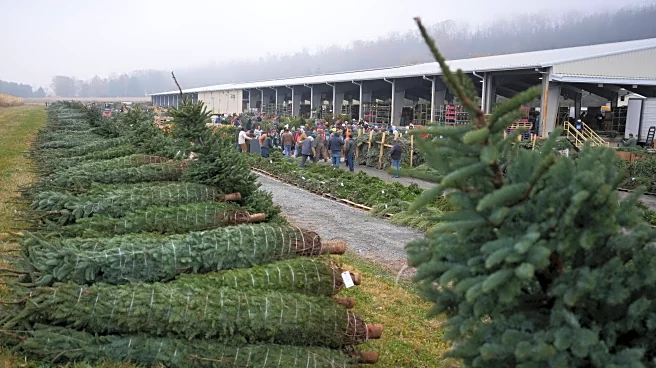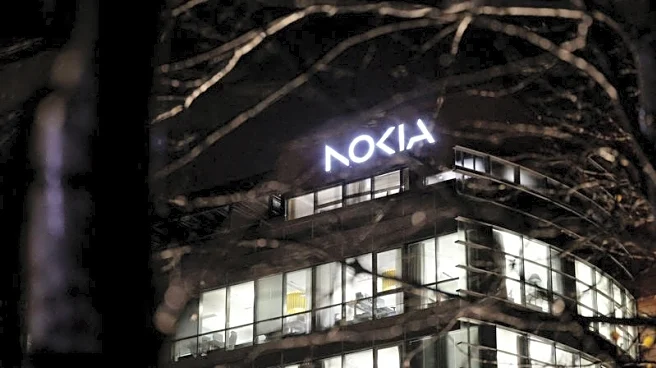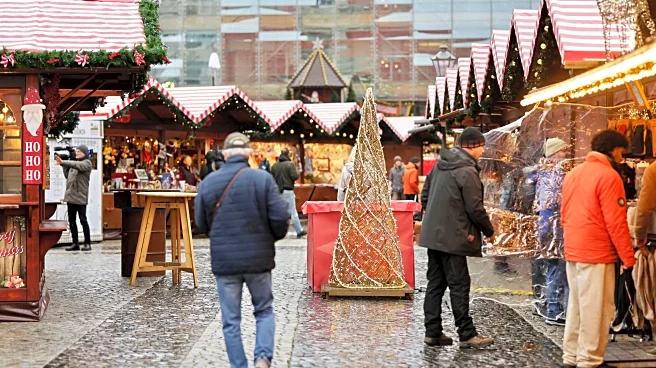What's Happening?
In Mifflinburg, Pennsylvania, the Buffalo Valley Produce Auction hosted its annual two-day event, attracting buyers from across the Northeast and mid-Atlantic regions. Approximately 50,000 Christmas trees,
along with wreaths, crafts, and other seasonal items, were sold to supply garden stores and retail outlets. The auction featured a variety of holiday decorations, including ornaments, winterberry, cotton branches, and tree stands. Despite the chilly temperatures, buyers were eager to purchase items for the upcoming holiday season. Marsha Gray from the Real Christmas Tree Board noted a shift in consumer preferences, with more households opting for artificial trees over real ones. However, the scent of real trees remains a significant factor for those choosing farm-grown options. The auction manager, Neil Courtney, expressed optimism about stabilizing prices and reversing the trend towards artificial trees.
Why It's Important?
The event highlights the evolving consumer habits in the Christmas tree market, where artificial trees have gained popularity due to convenience and longevity. However, the demand for real trees persists, driven by their natural scent and the tradition they represent. This shift impacts Christmas tree farmers and retailers, who must adapt to changing preferences while maintaining competitive pricing. The auction serves as a crucial platform for retailers to source high-quality decorations, influencing their sales strategies and profitability during the holiday season. The stabilization of farm-grown tree prices offers hope for farmers and retailers aiming to preserve the tradition of real Christmas trees.
What's Next?
As the holiday season approaches, retailers will focus on marketing strategies to attract consumers seeking both real and artificial trees. The Real Christmas Tree Board's research suggests that families with children are more likely to choose real trees, indicating a potential target demographic for retailers. The auction's success may encourage similar events, providing opportunities for farmers and retailers to connect and negotiate favorable deals. Additionally, the stabilization of prices could lead to increased competition among retailers, prompting them to enhance their offerings and customer experience.
Beyond the Headlines
The preference for real Christmas trees over artificial ones reflects broader cultural and environmental considerations. Real trees are often seen as more sustainable, as they are biodegradable and can be recycled. This aspect may appeal to environmentally conscious consumers, influencing their purchasing decisions. The tradition of choosing and cutting a real tree also holds sentimental value for many families, reinforcing cultural practices during the holiday season. As consumer awareness of environmental issues grows, the demand for sustainable holiday decorations could shape future market trends.















